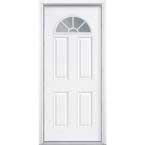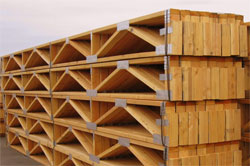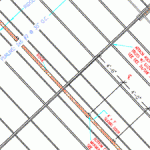DEAR POLE BARN GURU: I have a (about) 40×24 pole building that faces north. I have a regular door that faces west. The wind and any accompanying rain typically blows directly against that west facing door. The building was built in 1996 by the original owner of the house. I’ve only lived in the house for 3 years and when we bought the house the moulding and threshold were starting to deteriorate. I would like to add an awning over the door to stop the rain from pounding against it. Is it as simple as attaching a ledger board, building off it, and adding a roof? CHRIS in SEAFORD
 DEAR CHRIS: You sadly have a very common problem – people all too often end up with exterior people doors which are sadly inadequate for long term use. Most often they have wood jambs which have been left exposed to the weather and not kept painted or otherwise protected.
DEAR CHRIS: You sadly have a very common problem – people all too often end up with exterior people doors which are sadly inadequate for long term use. Most often they have wood jambs which have been left exposed to the weather and not kept painted or otherwise protected.
As to your solution – just adding a roof off the existing building may very well be problematic, as the footings of the existing building are probably inadequate to support the added weight from the added roof (awning).
What I would do – I would replace the troubled entry door with an insulated commercial steel door with steel jambs which is factory finish painted (I actually have recently done this with three of my own doors).
If you do want to build a permanent roof over the door, you should hire a competent registered design professional (architect or engineer) to inspect your present building and design a solution for you which will not compromise the integrity of your existing structure. It will be money well invested.
DEAR POLE BARN GURU: Hello I am wanting to build a 40x104x18 pole barn, my dad will have his living quarters and a wood shop on the main level, the second level will be my living quarters and an exercise room. The top level will be 40’—40 feet. What kind of beam or footing do you recommend? Also if you would like to quote me for this building package that would be great. Thank you, SHAWN in WRIGHT CITY
DEAR SHAWN: Lots of ways you can go with supporting your second floor, and how you design the floor will determine the size (diameter) of the concrete footings needed beneath the individual columns.
Least expensive will place a literal forest of columns below the floor – on 40 foot square, most probably every 10 feet in both directions. Whilst this might be dandy for the pocket book, it could cause challenges with the use of the space below.
As columns become spaced further apart, the beams necessary to support the floor joists and possibly the floor joists themselves are going to become larger in dimension and their cost will not be offset by the savings of a few columns.
I recently designed a floor for a 40 foot by 40 foot residence which had only a single column dead in the center. The LVLs (https://www.hansenpolebuildings.com/2013/01/lvl/) necessary to carry the floor joists were 20 inches in depth! The floor joists were 2×12 at 12 inches on center. Not a low budget investment, but it did provide far greater flexibility downstairs.
 Another option is to go to prefabricated wood floor trusses. In our own home we have a 48 foot wide clearspan floor – it is also four feet deep! A floor this thick requires a taller eave height to allow adequate headroom. And yes, it is expensive!
Another option is to go to prefabricated wood floor trusses. In our own home we have a 48 foot wide clearspan floor – it is also four feet deep! A floor this thick requires a taller eave height to allow adequate headroom. And yes, it is expensive!
Regardless of which of these options works best for your internal layout it will behoove you to look at the ultimate stiffness of the floor in regards to deflection. Some extended reading on floor deflection and vibration can be found at: https://www.hansenpolebuildings.com/2015/12/wood-floors-deflection-and-vibration/.
DEAR POLE BARN GURU: I currently have a 30×40 pole barn. I want to install a post lift and would need to remove one bottom chord on a truss. The trusses are 4ft on center. Is this possible and how would I do such a thing? The pole barn is also insulated and closed in with 5/8 osb. Except for the one 8 ft span. DUSTIN in NESCOPECK
DUSTIN: Given enough time and money, anything is possible, although probably not practical. Your situation is one of my “case in points” as to why post frame buildings with trusses placed every four feet on top of truss carriers is not the most flexible design solution when it comes to having to remodel.
 Should you pursue a remodel, it should ultimately involve a registered design professional (architect or engineer) as what you are looking at doing is not going to be a simple task.
Should you pursue a remodel, it should ultimately involve a registered design professional (architect or engineer) as what you are looking at doing is not going to be a simple task.
I’d probably follow a path such as this – adding a new extra truss to the single truss at each side of the eight foot area. Temporarily supporting the flat purlins over the middle truss whilst removing it, then adding purlins on edge between the two new trusses (and either under or next to the existing purlins). Keep in mind, this is a highly simplistic outline and the actual fix will be far more complicated.
A less expensive solution – add a 12 foot bay onto one end of the building with a truss on each side of the 12 feet and purlins spanning from truss to truss.






